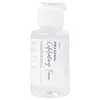What's inside
What's inside
 Key Ingredients
Key Ingredients

 Benefits
Benefits

 Concerns
Concerns

 Ingredients Side-by-side
Ingredients Side-by-side

Water
Skin ConditioningGlycerin
HumectantButyrospermum Parkii Butter Extract
Skin ConditioningPropylene Glycol
HumectantDiethylhexyl Carbonate
EmollientDimethicone
EmollientEthylhexyl Palmitate
EmollientPrunus Amygdalus Dulcis Oil
Skin ConditioningHelianthus Annuus Seed Oil
EmollientCetearyl Alcohol
EmollientAluminum Starch Octenylsuccinate
AbsorbentCocos Nucifera Oil
MaskingGlyceryl Stearate
EmollientPEG-100 Stearate
Polysorbate 20
EmulsifyingAmmonium Acryloyldimethyltaurate/Vp Copolymer
Butylene Glycol
HumectantCeteareth-20
CleansingIsostearyl Isostearate
EmollientMica
Cosmetic ColorantPhenoxyethanol
PreservativeCaprylic/Capric Triglyceride
MaskingPolyacrylamide
Sodium Benzoate
MaskingCentella Asiatica Leaf Extract
Skin ConditioningChlorphenesin
AntimicrobialC13-14 Isoparaffin
EmollientBHT
AntioxidantTocopheryl Acetate
AntioxidantXanthan Gum
EmulsifyingCetyl-Pg Hydroxyethyl Palmitamide
Skin ConditioningHydrogenated Lecithin
EmulsifyingDisodium EDTA
Hyaluronic Acid
HumectantTriethanolamine
BufferingDiglucosyl Gallic Acid
Ethylhexylglycerin
Skin ConditioningCeramide NP
Skin ConditioningCholesterol
EmollientC9-11 Pareth-6
EmulsifyingTriethoxycaprylylsilane
Water, Glycerin, Butyrospermum Parkii Butter Extract, Propylene Glycol, Diethylhexyl Carbonate, Dimethicone, Ethylhexyl Palmitate, Prunus Amygdalus Dulcis Oil, Helianthus Annuus Seed Oil, Cetearyl Alcohol, Aluminum Starch Octenylsuccinate, Cocos Nucifera Oil, Glyceryl Stearate, PEG-100 Stearate, Polysorbate 20, Ammonium Acryloyldimethyltaurate/Vp Copolymer, Butylene Glycol, Ceteareth-20, Isostearyl Isostearate, Mica, Phenoxyethanol, Caprylic/Capric Triglyceride, Polyacrylamide, Sodium Benzoate, Centella Asiatica Leaf Extract, Chlorphenesin, C13-14 Isoparaffin, BHT, Tocopheryl Acetate, Xanthan Gum, Cetyl-Pg Hydroxyethyl Palmitamide, Hydrogenated Lecithin, Disodium EDTA, Hyaluronic Acid, Triethanolamine, Diglucosyl Gallic Acid, Ethylhexylglycerin, Ceramide NP, Cholesterol, C9-11 Pareth-6, Triethoxycaprylylsilane
Water
Skin ConditioningGluconolactone
Skin ConditioningGlycerin
HumectantPropanediol
SolventSalicylic Acid
MaskingButylene Glycol
HumectantAmylopectin
Xanthan Gum
EmulsifyingDextrin
AbsorbentNiacinamide
SmoothingPhenoxyethanol
PreservativeDMDM Hydantoin
PreservativeAllantoin
Skin ConditioningCitric Acid
BufferingSea Water
HumectantAloe Barbadensis Leaf Extract
EmollientSodium Hyaluronate
HumectantDisodium EDTA
1,2-Hexanediol
Skin ConditioningIngredients Explained
These ingredients are found in both products.
Ingredients higher up in an ingredient list are typically present in a larger amount.
Butylene Glycol (or BG) is used within cosmetic products for a few different reasons:
Overall, Butylene Glycol is a safe and well-rounded ingredient that works well with other ingredients.
Though this ingredient works well with most skin types, some people with sensitive skin may experience a reaction such as allergic rashes, closed comedones, or itchiness.
Learn more about Butylene GlycolDisodium EDTA plays a role in making products more stable by aiding other preservatives.
It is a chelating agent, meaning it neutralizes metal ions that may be found in a product.
Disodium EDTA is a salt of edetic acid and is found to be safe in cosmetic ingredients.
Learn more about Disodium EDTAGlycerin is already naturally found in your skin. It helps moisturize and protect your skin.
A study from 2016 found glycerin to be more effective as a humectant than AHAs and hyaluronic acid.
As a humectant, it helps the skin stay hydrated by pulling moisture to your skin. The low molecular weight of glycerin allows it to pull moisture into the deeper layers of your skin.
Hydrated skin improves your skin barrier; Your skin barrier helps protect against irritants and bacteria.
Glycerin has also been found to have antimicrobial and antiviral properties. Due to these properties, glycerin is often used in wound and burn treatments.
In cosmetics, glycerin is usually derived from plants such as soybean or palm. However, it can also be sourced from animals, such as tallow or animal fat.
This ingredient is organic, colorless, odorless, and non-toxic.
Glycerin is the name for this ingredient in American English. British English uses Glycerol/Glycerine.
Learn more about GlycerinPhenoxyethanol is a preservative that has germicide, antimicrobial, and aromatic properties. Studies show that phenoxyethanol can prevent microbial growth. By itself, it has a scent that is similar to that of a rose.
It's often used in formulations along with Caprylyl Glycol to preserve the shelf life of products.
Water. It's the most common cosmetic ingredient of all. You'll usually see it at the top of ingredient lists, meaning that it makes up the largest part of the product.
So why is it so popular? Water most often acts as a solvent - this means that it helps dissolve other ingredients into the formulation.
You'll also recognize water as that liquid we all need to stay alive. If you see this, drink a glass of water. Stay hydrated!
Learn more about WaterXanthan gum is used as a stabilizer and thickener within cosmetic products. It helps give products a sticky, thick feeling - preventing them from being too runny.
On the technical side of things, xanthan gum is a polysaccharide - a combination consisting of multiple sugar molecules bonded together.
Xanthan gum is a pretty common and great ingredient. It is a natural, non-toxic, non-irritating ingredient that is also commonly used in food products.
Learn more about Xanthan Gum